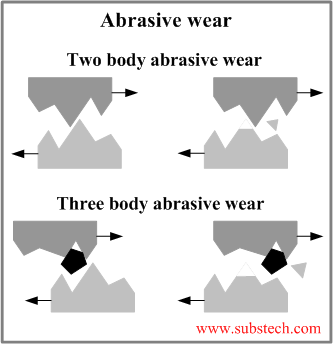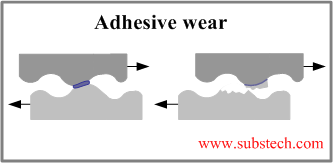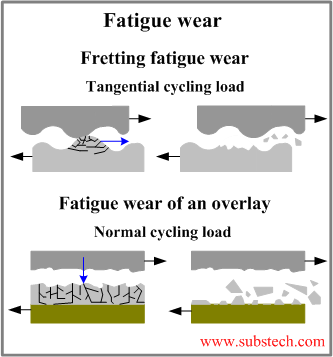Main page
About us
Sliding Bearings Consulting
Advertising Opportunities

SubsTech’s sister website Smooth Sliding provides independent engineering consulting services that help you to solve engine bearing related issues: failures, material selection, geometry design and optimization of hydrodynamic conditions.
Smooth Sliding is an engineering consulting company run by Dr. Dmitri Kopeliovich:
- VP R&D of King Engine Bearings.
- World leading expert (32 years of experience) in design, technology and materials for Engine bearings in applications such as automotive, renewable energy, aviation, racing and others.
- Founder and owner of SubsTech (Substances & Technologies) – a leading professional website on Materials Science and Engineering.
- Author of numerous scientific and engineering publications and patents.
- Founder and owner of Smooth Sliding.
For further information and for requesting consulting services please visit our sister website Smooth Sliding.
to Metals
to Engine bearings
Mechanisms of wear
Dr. Dmitri Kopeliovich
Wear is the removal of the material from the surface of a solid body as a result of mechanical action of the counterbody.
Wear of Engine bearings is the removal of the bearing material from its surface caused by sliding friction between the bearing and the crankshaft.
Wear may combine effects of various physical and chemical processes proceeding during the friction between two counteracting materials: micro-cutting, micro-ploughing, Plastic deformation, cracking, fracture, welding, melting, chemical interaction.
The mechanisms of wear:
Abrasive wear
 Abrasive wear occurs when a harder material is rubbing against a softer material.
Abrasive wear occurs when a harder material is rubbing against a softer material.
- If there are only two rubbing parts involved in the friction process the wear is called two body wear.
In this case the wear of the softer material is caused by the asperities on the harder surface.
- If the wear is caused by a hard particle (grit) trapped between the rubbing surfaces it is called three body wear. The particle may be either free or partially embedded into one of the mating materials.
In the micro-level abrasive action results in one of the following wear modes:
- Ploughing. The material is shifted to the sides of the wear groove. The material is not removed from the surface.
- Cutting. A chip forms in front of the cutting asperity/grit. The material is removed (lost) from the surface in the volume equal to the volume of the wear track (groove).
- Cracking (brittle fracture). The material cracks in the subsurface regions surrounding the wear groove. The volume of the lost material is higher than the volume of the wear track.
Adhesive wear
 Adhesion wear is a result of micro-junctions caused by welding between the opposing asperities on the rubbing surfaces of the counterbodies. The load applied to the contacting asperities is so high that they deform and adhere to each other forming micro-joints.
Adhesion wear is a result of micro-junctions caused by welding between the opposing asperities on the rubbing surfaces of the counterbodies. The load applied to the contacting asperities is so high that they deform and adhere to each other forming micro-joints.
The motion of the rubbing counterbodies result in rupture of the micro-joints. The welded asperity ruptures in the non-deformed (non-cold worked) regions.
Thus some of the material is transferred by its counterbody. This effect is called scuffing or galling.
When a considerable areas of the rubbing surfaces are joined during the friction a Seizure resistance (compatibility) seizure of one of the bodies by the counterbody may occur.
The factors decreasing adhesive wear:
- Lower load.
- Harder rubbing materials.
- Contaminated rubbing surfaces.
- Presence of solid lubricants.
- Presence of a lubrication oil.
- Anti-wear additives in oil.
Fatigue wear
 Fatigue wear of a material is caused by a cycling loading during friction. Fatigue occurs if the applied load is higher than the fatigue strength of the material.
Fatigue wear of a material is caused by a cycling loading during friction. Fatigue occurs if the applied load is higher than the fatigue strength of the material.
Fatigue cracks start at the material surface and spread to the subsurface regions. The cracks may connect to each other resulting in separation and delamination of the material pieces.
One of the types of fatigue wear is fretting wear caused by cycling sliding of two surfaces across each other with a small amplitude (oscillating). The friction force produces alternating compression-tension stresses, which result in surface fatigue.
Fatigue of overlay of an engine bearing may result in the propagation of the cracks up to the intermediate layer and total removal of the overlay.
to top
Corrosive wear
Wear may be accelerated by corrosion (oxidation) of the rubbing surfaces.
Increased temperature and removal of the protecting oxide films from the surface during the friction promote the oxidation process. Friction provides continuous removal of the oxide film followed by continuous formation of new oxide film.
Hard oxide particles removed from the surface and trapped between the sliding/rolling surfaces additionally increase the wear rate by three body abrasive wear mechanism.
to top
Erosive wear
Erosive wear is caused by impingement of particles (solid, liquid or gaseous), which remove fragments of materials from the surface due to momentum effect.
Erosive wear of Engine bearings may be caused by cavitation in the lubrication oil. The cavitation voids (bubbles) may form when the oil exits from the convergent gap between the bearing and journal surfaces. The oil pressure rapidly drop providing conditions for voids formation (the pressure is lower than the oil vapor pressure). The bubbles (voids) then collapse producing a shock wave, which removes particles of the bearing material from the bearing.
to top
Related internal links
to Metals
to Engine bearings


